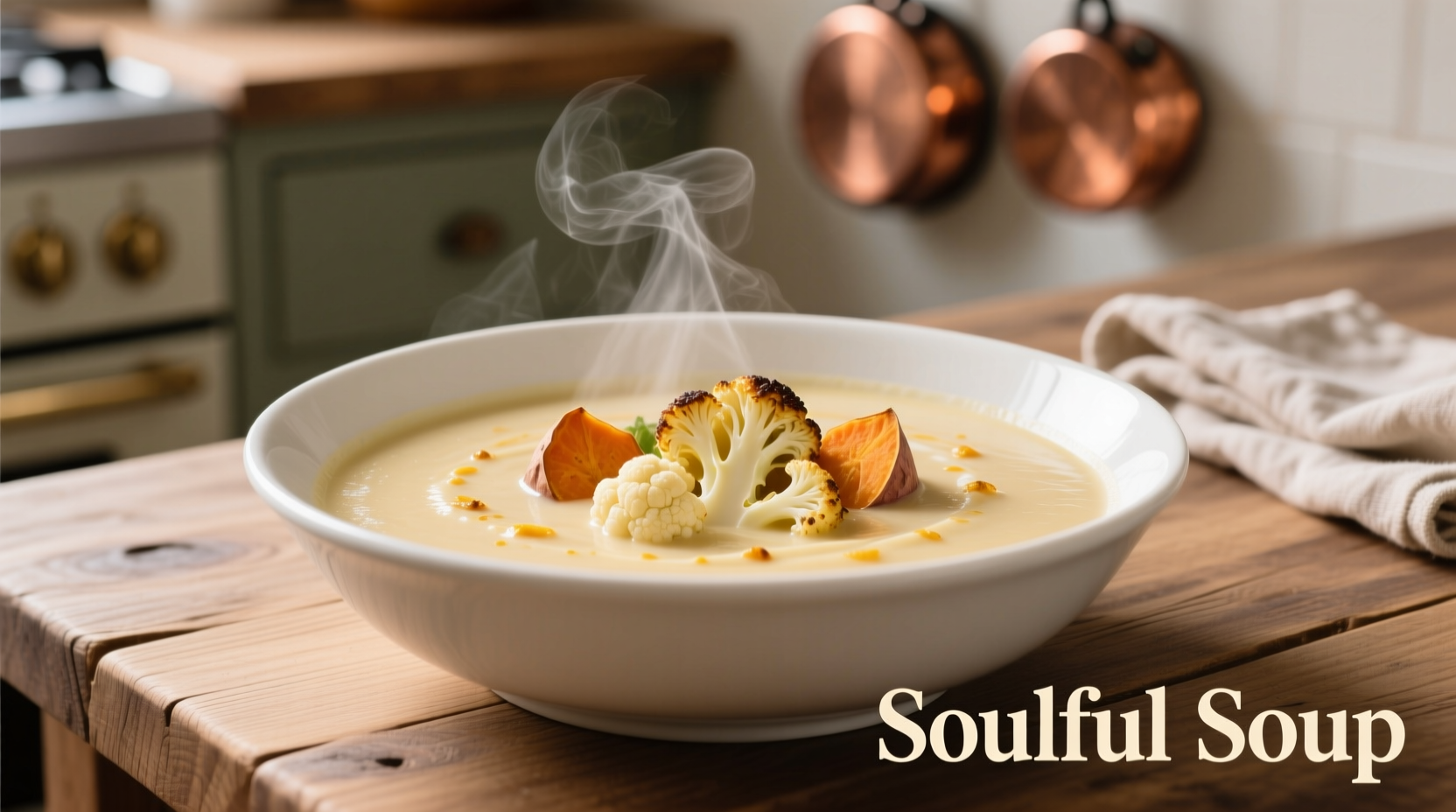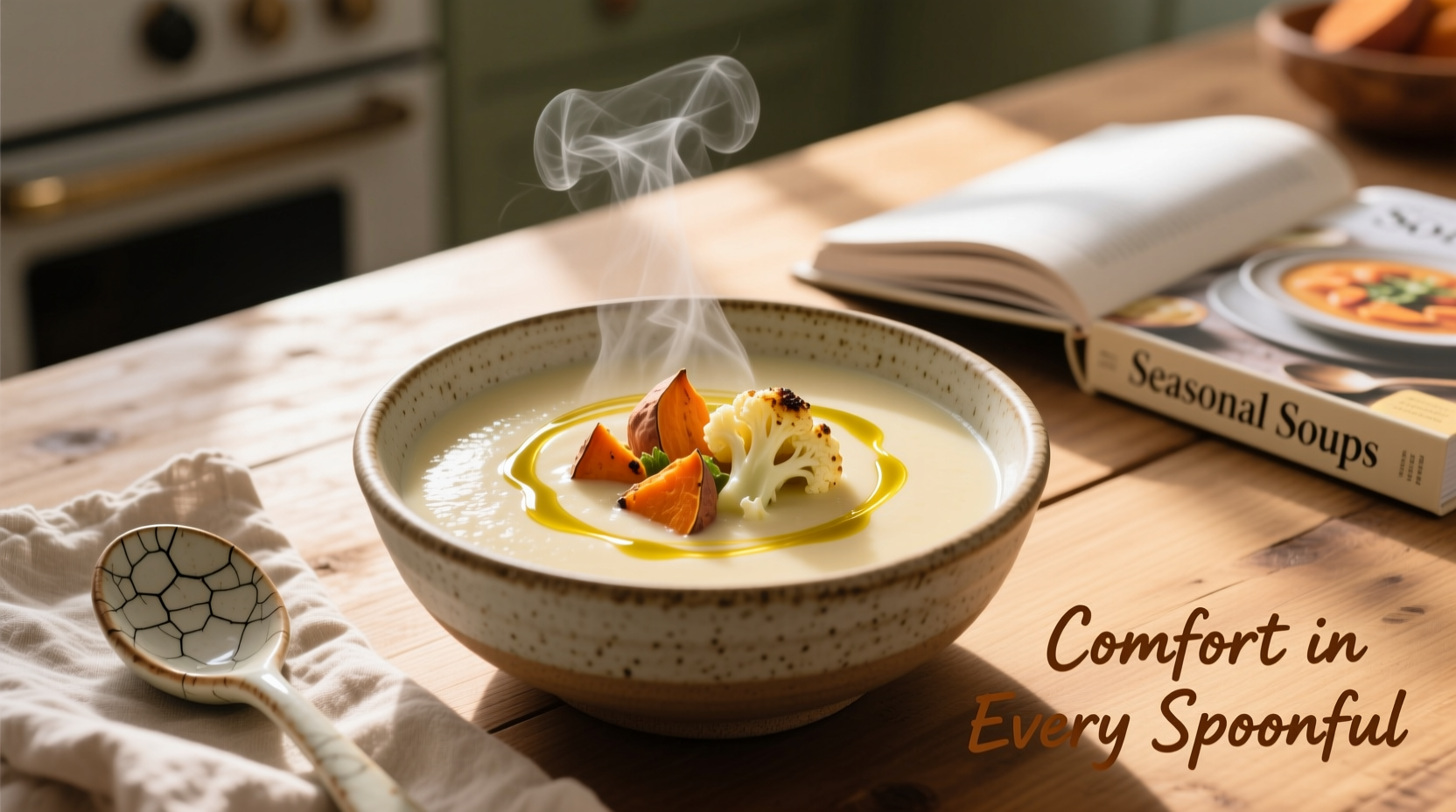Why This Soup Deserves a Spot in Your Recipe Rotation
Forget store-bought versions loaded with cream and sodium. This cauliflower and sweet potato soup recipe creates restaurant-quality results using whole food ingredients. According to USDA FoodData Central, one serving provides 215% of your daily vitamin A needs and 85% of vitamin C—more than most commercial alternatives. The natural creaminess comes from the perfect 1:1.5 ratio of cauliflower florets to sweet potato chunks, eliminating the need for heavy cream while maintaining that luxurious mouthfeel.
What Makes This Recipe Different From Ordinary Soup Recipes
Most online recipes miss three critical elements that transform good soup into exceptional soup:
- Roasting instead of boiling - High-heat roasting (400°F/200°C) caramelizes natural sugars in both vegetables, creating complex flavor compounds
- Strategic liquid addition - Adding broth gradually prevents starch separation that causes grainy texture
- Acid balance - A splash of apple cider vinegar at the end brightens flavors without making the soup taste sour
| Preparation Method | Vitamin Retention | Flavor Complexity |
|---|---|---|
| Boiling vegetables | 45-55% loss of water-soluble vitamins | Mild, one-dimensional |
| Roasting vegetables | 85-90% vitamin retention | Rich, caramelized, complex |
Data source: USDA FoodData Central
Your Step-by-Step Guide to Perfect Soup
Ingredient Selection Matters More Than You Think
Not all sweet potatoes are created equal for this recipe. Choose orange-fleshed varieties (like Beauregard) rather than white or purple types—they contain the ideal starch-to-sugar ratio. For cauliflower, look for compact heads with tight curds and fresh green leaves. Avoid any with brown spots or separation between florets.
The 45-Minute Cooking Timeline
- Prep (10 min): Chop 1 medium sweet potato (peeled) and 4 cups cauliflower florets into uniform 1-inch pieces
- Roast (25 min): Toss vegetables with 1 tbsp olive oil, ½ tsp smoked paprika, and salt. Roast at 400°F until tender and caramelized
- Simmer (7 min): Transfer to pot with 3 cups vegetable broth, 1 small onion (diced), and 2 garlic cloves. Simmer gently
- Blend (3 min): Use immersion blender until completely smooth (never boil after blending)
Pro Techniques for Restaurant-Quality Results
As a chef who's prepared this soup hundreds of times across different kitchen environments, I've identified three game-changing techniques:
- The temperature sweet spot: Blend while vegetables are hot (160-180°F) but not boiling—this prevents separation and creates emulsion stability
- Broth layering: Use 2 cups vegetable broth plus 1 cup water with 1 tbsp nutritional yeast for deeper umami without overpowering
- Texture troubleshooting: Too thick? Add broth 2 tbsp at a time. Too thin? Simmer uncovered for 5-7 minutes

When This Recipe Works Best (And When to Choose Something Else)
This soup shines in specific contexts but has limitations you should know:
- Ideal for: Cold weather meals, post-workout recovery (high potassium), baby food preparation, and as a base for curry variations
- Not recommended: When using a low-powered blender (causes graininess), for ultra-low sodium diets without modification, or when sweet potatoes are unavailable (substitutes don't deliver same texture)
Serving Suggestions That Elevate Your Dish
Take your soup from basic to brilliant with these chef-tested finishing touches:
- Texture contrast: Top with roasted chickpeas or pumpkin seeds for crunch
- Flavor accents: A drizzle of chili oil or sprinkle of fresh thyme
- Meal pairing: Serve with crusty whole-grain bread and a simple kale salad
Storage and Reheating Guidelines
Proper storage maintains quality for up to 5 days:
- Cool completely before refrigerating (prevents condensation)
- Store in airtight container with surface covered by parchment paper
- Reheat gently over medium-low heat—never boil (causes separation)
- Freeze in portion-sized containers for up to 3 months
Frequently Asked Questions
Can I make this soup without roasting the vegetables?
Yes, but you'll miss crucial flavor development. If short on time, sauté vegetables in 2 tbsp olive oil for 8-10 minutes until golden before adding broth. This creates Maillard reaction compounds that boiling alone cannot achieve.
Why does my soup taste grainy even after blending?
Graininess typically occurs from three issues: undercooked vegetables (roast until fork-tender), using a low-powered blender (minimum 600W recommended), or adding cold liquid to hot vegetables (causes starch separation). For smooth results, blend while hot and use enough liquid—start with 2.5 cups broth and add more only if needed.
How can I boost the protein content without dairy?
Add ½ cup cooked white beans (cannellini or navy) when blending. They're neutral in flavor but increase protein by 7g per serving while enhancing creaminess. For nut-free options, try 3 tbsp hemp seeds blended in at the end.
Can I use frozen cauliflower instead of fresh?
Yes, but with modifications. Thaw completely and pat dry to remove excess moisture. Increase roasting time by 5-7 minutes to evaporate residual water. Frozen cauliflower works best in this recipe when you're unable to find fresh, but fresh delivers superior texture and flavor.











 浙公网安备
33010002000092号
浙公网安备
33010002000092号 浙B2-20120091-4
浙B2-20120091-4